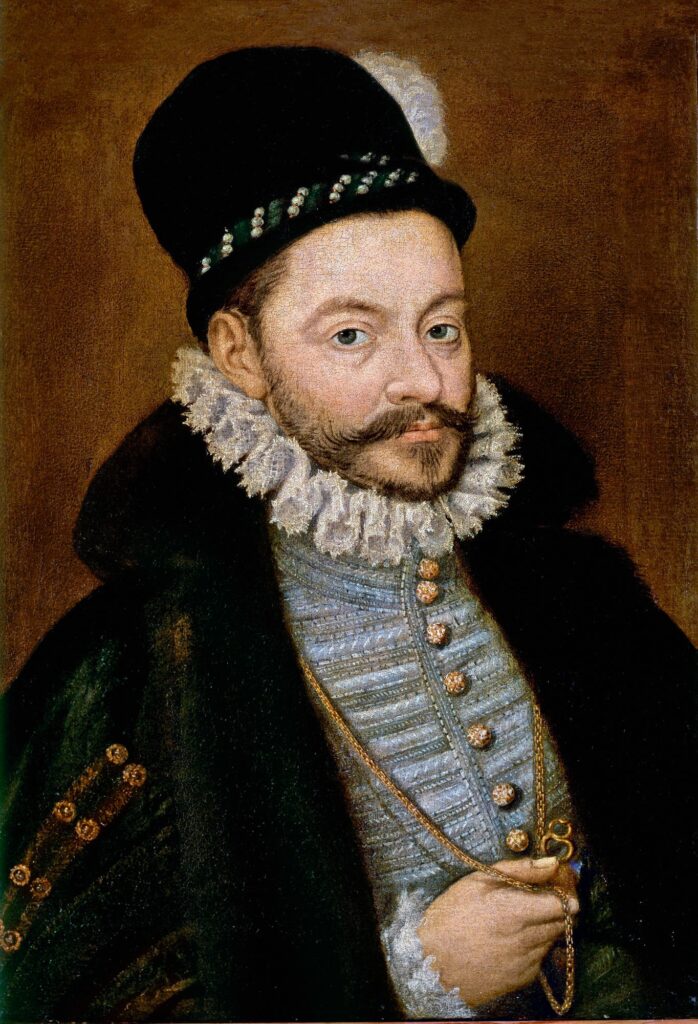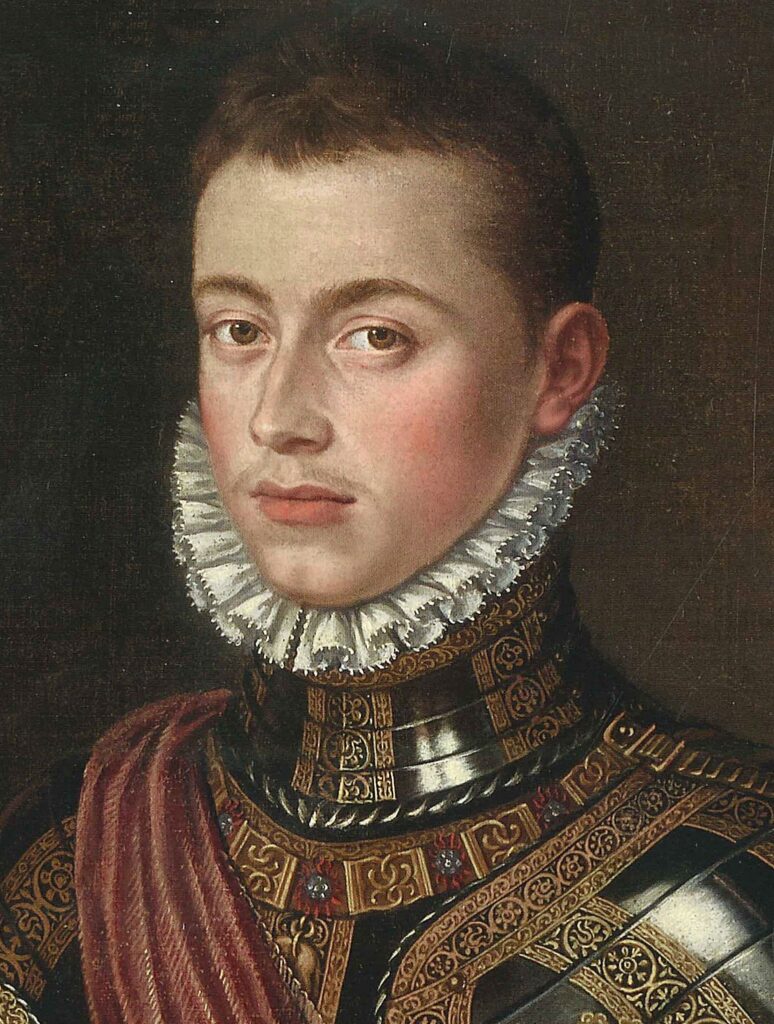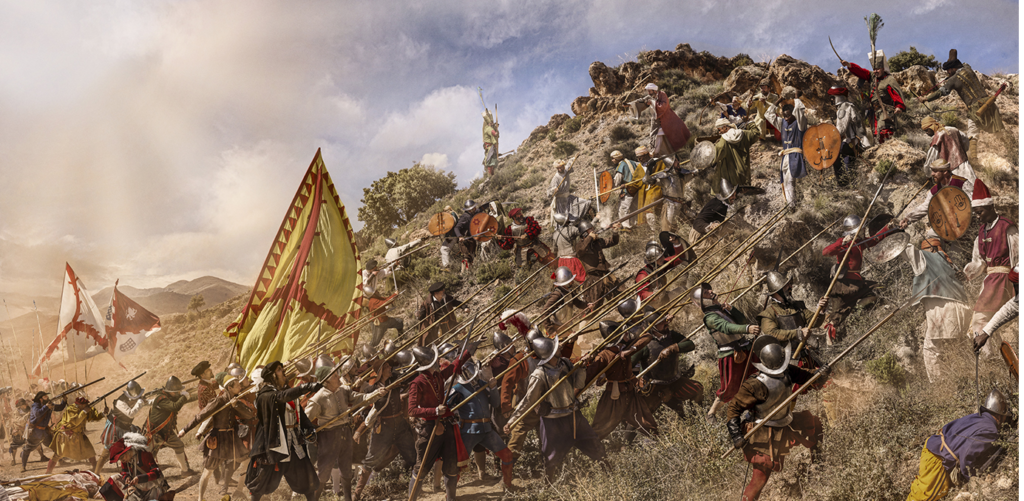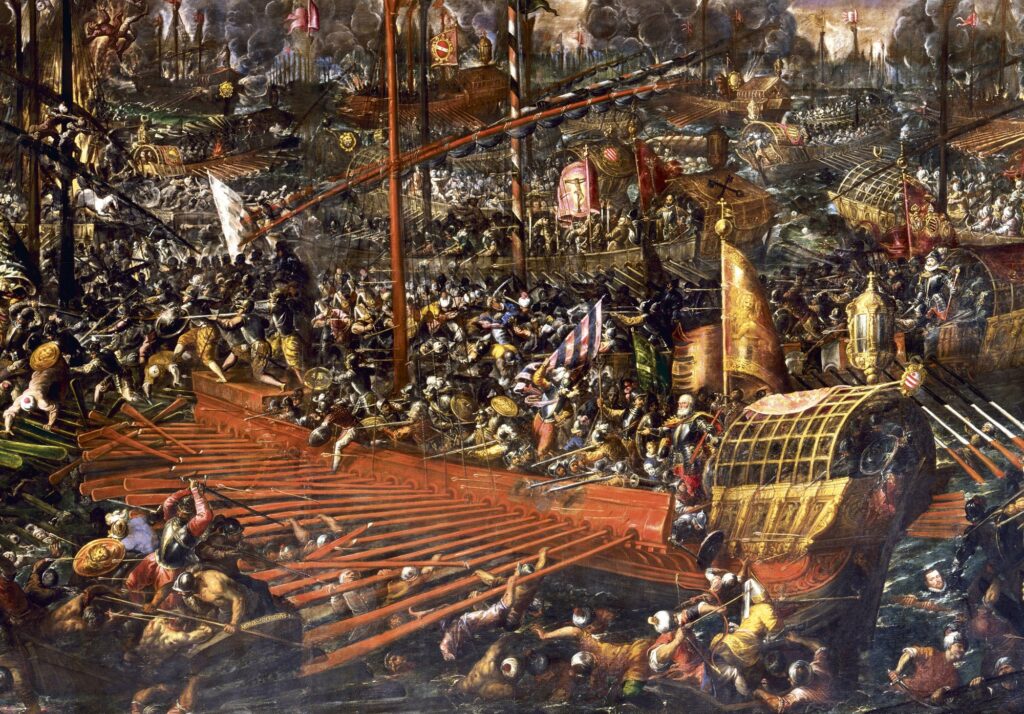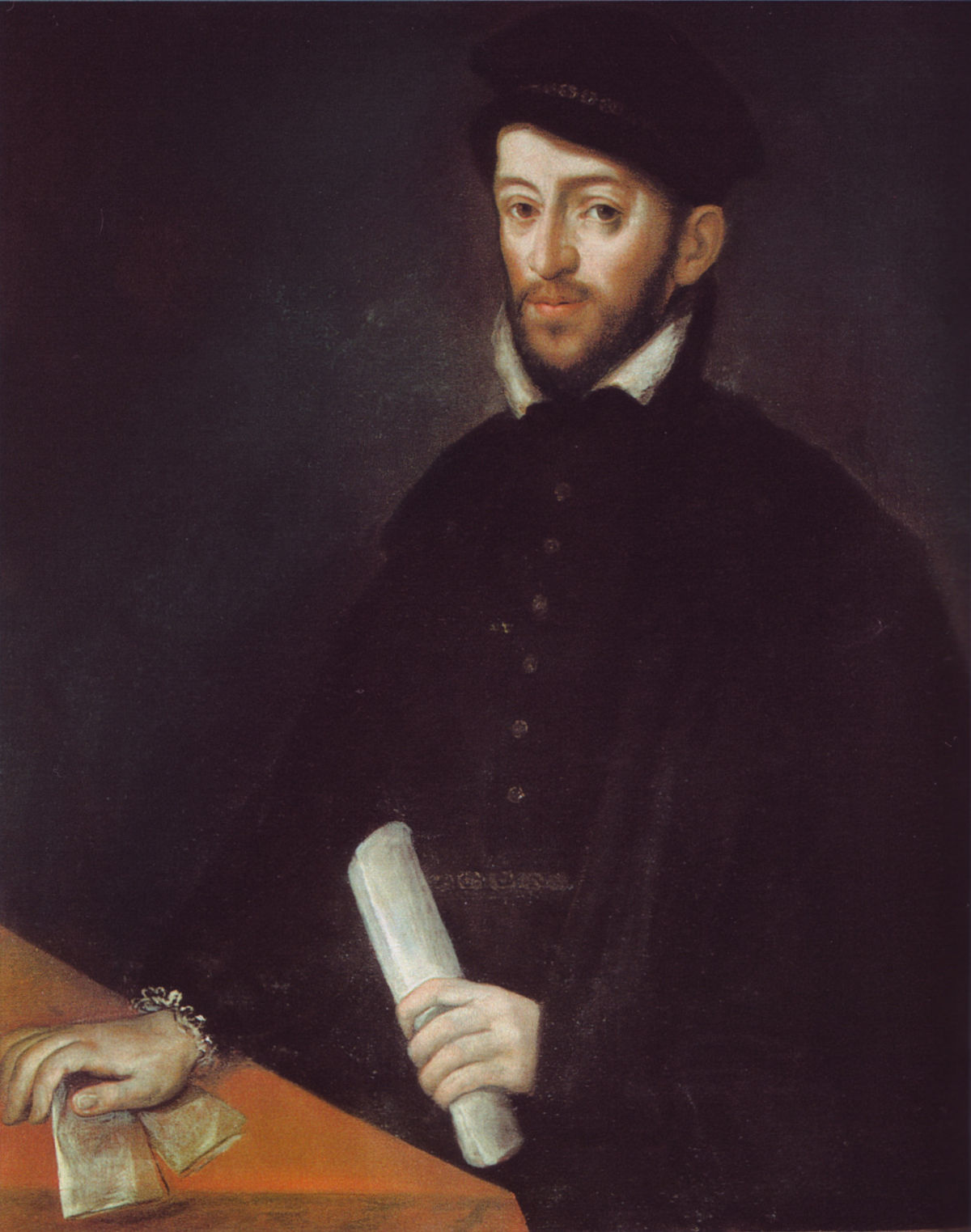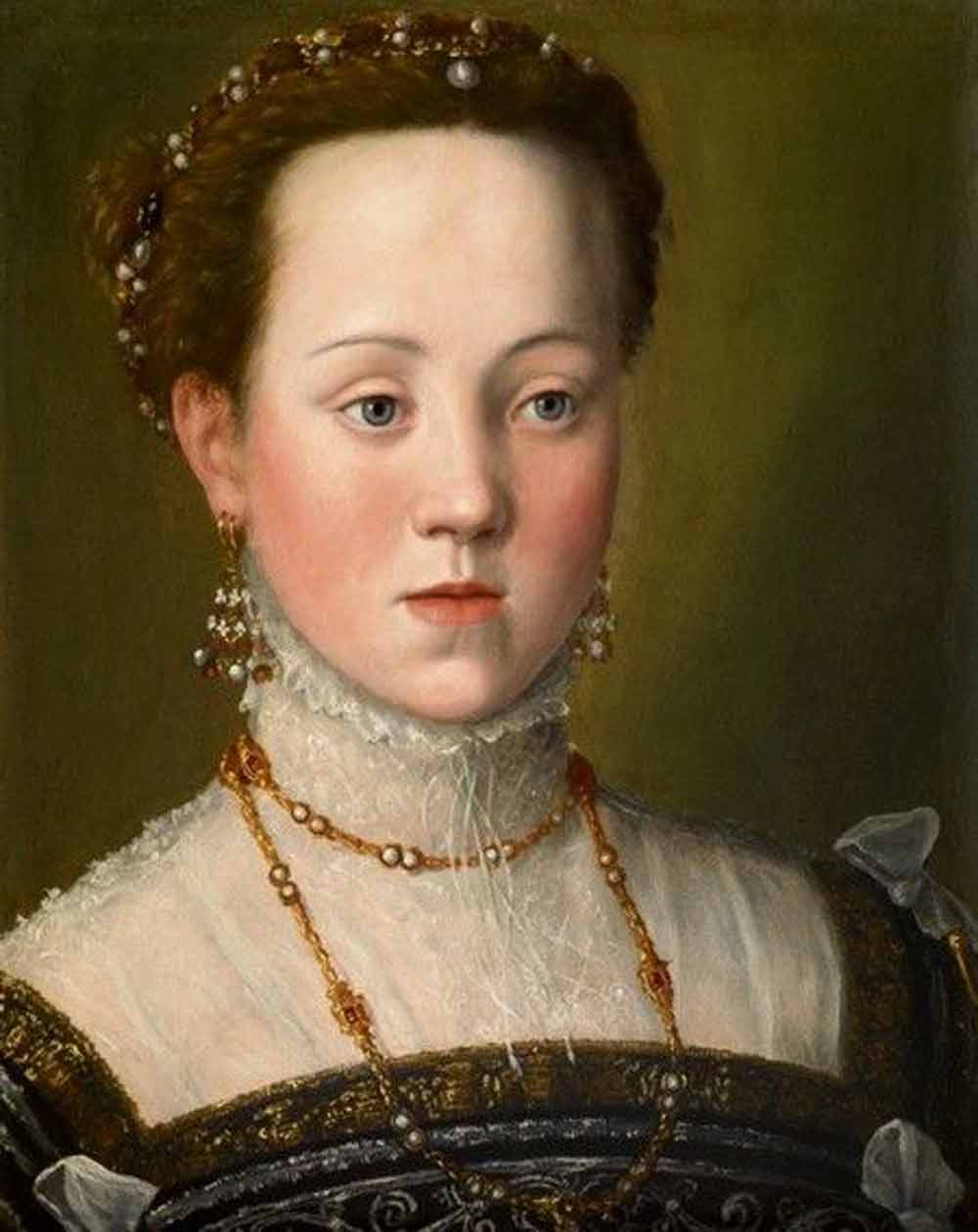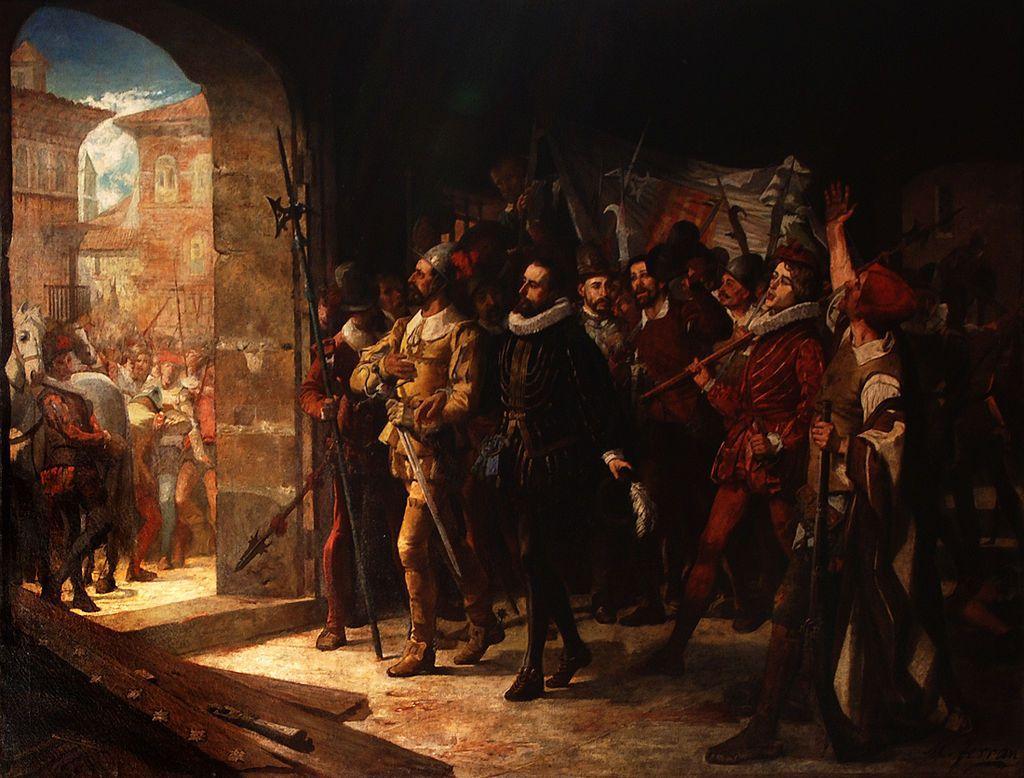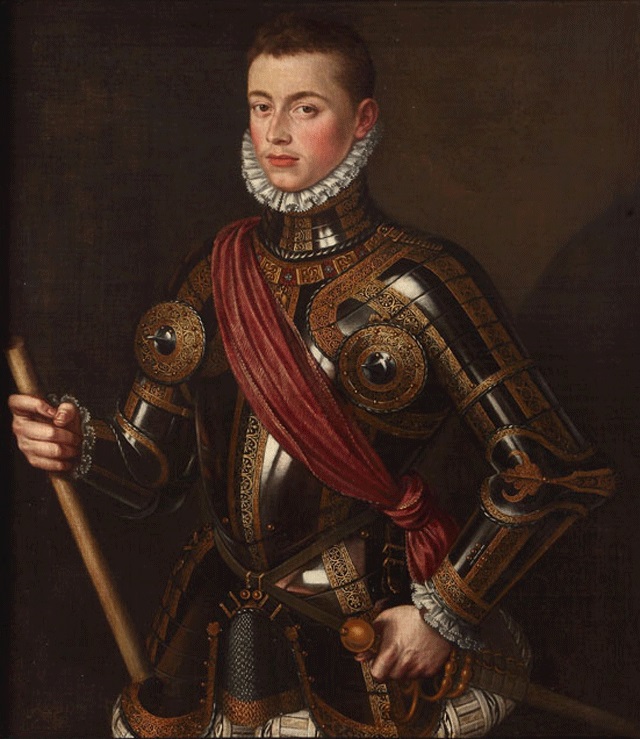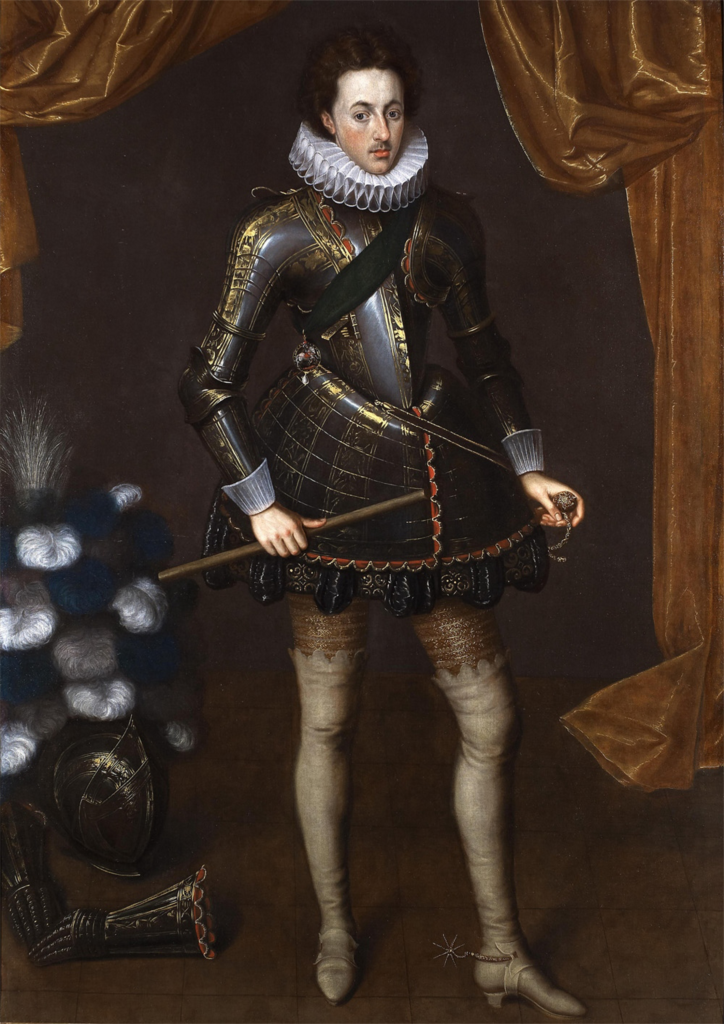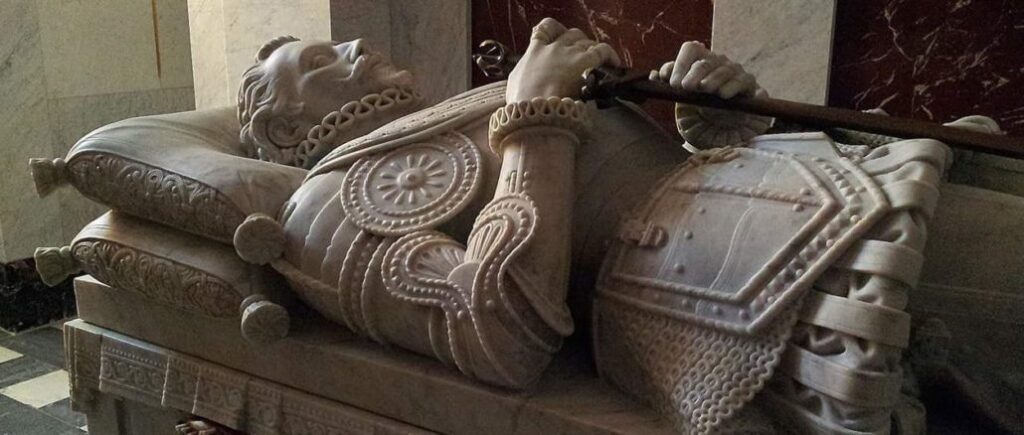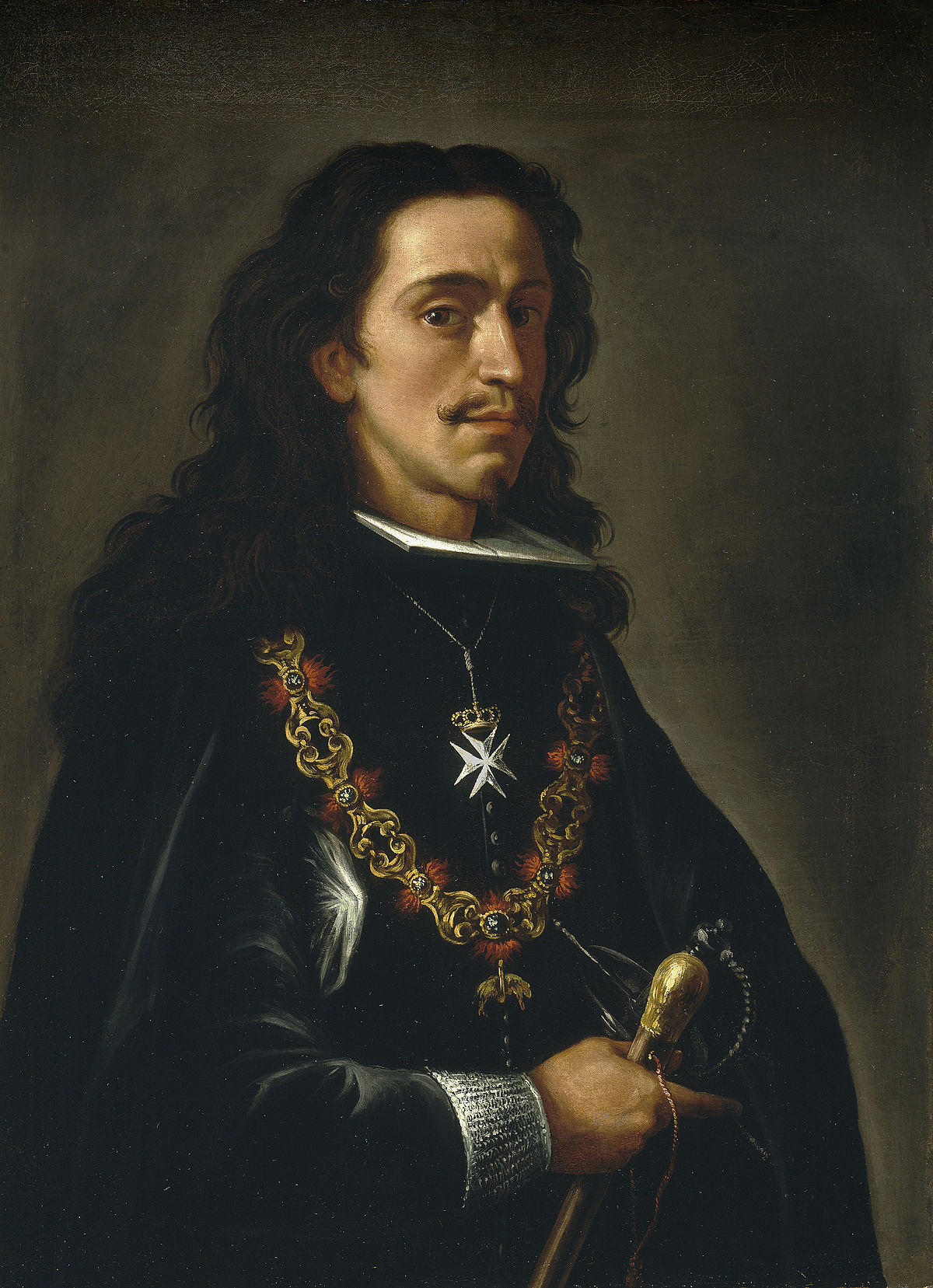Juan de Austria, a great hero born from a love relationship between King Carlos I of Spain and Bárbara Blomberg, being an illegitimate son, but this did not prevent him from becoming a great fighter for the freedom of the peoples. It is an interesting story of a hero ambitious to become a Royal Highness.

John of Austria: Biography
John of Austria was born in Regensburg, Germany, on February 24, 1545, his parents King Charles I of Spain and V of the Holy Roman Empire, and his mother Barbara Blomberg. He was conceived under the adultery of his father, and belonged to the Spanish Royal Family, a diplomatic and military man, during the period of government of his brother by his father, Felipe II.
His early years
In the biography of Juan de Austria the date of his birth is not clear, it can be evidenced in some writings that he came to the world in the year 1545 as established by the first biography narrated in the year 1627 by Vander Hammer, apparently the most reliable to be written after his death.
In this biography, he also indicates the place, day and time of his birth as: Regensburg on February 25 at 12.30:1547, while in others, for example, such as that of G. Parker or P. Pierson, they report that it was in the year XNUMX.
Pierson in his article entitled Don Juan de Austria narrates that certain contemporary settlers maintained that he was born in the year 1545 and also comments on certain "evidence in public ceremonies", without specifying, a subject that affirms the date of the year 1547.
However, there are others who claim to give a date as a possible conception, but, in these years the king was in Ghent according to what Manuel de Foronda tells in his work, narrates that he could have been conceived to be born on the two dates .
Without authenticating the year of his birth, what is certain is that he has a registered birth date of February 24, which they say was chosen by Juan himself, this being the birthday of his father Carlos I.
Juan's mother, when he was very young, married Jerónimo Píramo Kegell, Jerôme Pyramus Kegel, so it is likely that the name the child would bear was "Jerome" or "Jeromín", coming from the name of his stepfather.
Carlos I, decides that his son should have an upbringing in Spain. Whoever was his butler, Don Luis de Quijada, agreed, and they signed the agreement in Brussels on June 13, 1550, together with Francisco Massy, who was the violinist of the imperial court, married to Ana de Medina, of origin Spanish accepted his commitment in exchange for fifty ducats per year, to take care of the child's education.
In the middle of the year 1551 they arrived in Leganés, where his wife Ana de Medina owned large portions of land.
In the year 1554 and in the summer season, the child was transferred to the castle of Don Luis de Quijada, in Villagarcía de Campos, Valladolid, here the child lasted for a period of 5 years. His wife, Doña Magdalena de Ulloa, was in charge of his education, who was supported by the Latin teacher Guillén Prieto, the chaplain García de Morales and the squire Juan Galarza.
Prior to his death, Carlos I dedicated himself to writing his will dated June 6, 1554, in which he stated verbatim: “«as long as I was in Germany, after I imbiuded, I had a natural son by a single woman, the one called Geronimo.
While in the Yuste Monastery, the king gave instructions to don Luis de Quijada to go and live in that place, while the latter accepted the orders received and went to the village of Cuacos de Yuste. However, the emperor officially distinguished Don Juan de Austria as his own son, leaving him with his own handwriting in the will, which was revealed after his death in the year 1558.
In this it was written that his son Jerónimo would be called Juan, honoring the name with which he would be placed by Queen Juana, Carlos I.
Felipe II, the heir, was at that time outside of Spain. Then, many comments began about the child's paternity, which was denied by Quijada, while he wrote to the king requesting orders. We invite you to know the history of Jose de San Martin
Who responded immediately with a letter written by the secretary Eraso that in his erasures and amendments the confusion he had with the matter of how to handle such a delicate issue was observed, giving as a recommendation that he should wait until the king will return to Spain.
Princess Juana, tutor in the absence of Felipe II, requested that she wished to meet the child, which she fulfilled in Valladolid in the month of May of the year 1559, agreeing with a solemn proclamation. Similarly, it was done by his half brother Felipe, on September 28, 1559 in Santa Espina, a town in the municipality of Castromonte, Valladolid, Spain.
Then Felipe II, fulfilling the orders of his father Carlos, manifested in the testament of the year 1554, recognized the child as part of the members that make up the royal family. His name was changed to don Juan de Austria. He was given a home of his own, assigning Luis de Quijada as his main mentor.
Emperor Caesar did not want his elusive lovers to be publicly known, as well as observing that the child's mother did not provide the best way to raise the child.
So the emperor took the child from his mother in a good way, it is likely that he is still in the process of nursing. It is known that she entrusted him to the care of his assistant, Luis de Quijada, and he entrusted it to a lady of her full confidence, it is likely that she was a nurse selected with great care, and that she was not lost. of sight.
They say that only three or four people knew about the event, and that not even the heir to the Monarchy, Don Felipe, knew about it until 1556.
But, after three and a half years, there is enough information about the education of the Emperor's illegitimate son, who did not have the slightest idea of his lineage. However, the most authentic thing that can be assured is that since his arrival in the Castilian town of Leganés, the education of the unknown child was exemplary.
From the years 1550 to 1564, the child's education unfolded in three stages, and during the first two, the young Jerónimo did not know the secret of his birth, nor did the people who took care of him, with the exception of Luis Quijada.
Training
Don Juan of Austria finished his studies at the University of Alcalá de Henares where he attended in the company of two young men older than him: they were his nephews, Prince Carlos and Alejandro Farnesio, son of Margarita de Parma, being another illegitimate daughter of Emperor Charles.
His mentors include Honorato Juan Tristull, a student of Luis Vives. In the year 1562, the "House of Don Juan de Austria" appears, within the financial expenses of the Royal House, where the amount of 15.000 ducats was assigned, the same as Princess Juana.
During the year 1565, the Turks raided the island of Malta. To support its protection, a fleet was created in the port of Barcelona. Don Juan of Austria, asked the king to authorize him to join his beloved, which was objected. But, Don Juan, he escaped from the court and went to Barcelona, but he could not get to the fleet. But, a handwritten letter from his brother was what allowed him to abandon his plan to cross the south of France, to reach Italian territory and reach García de Toledo's fleet.
By virtue of the fact that his brother was not motivated by the religious career that his father, King Felipe II, had planned, he appointed him as Captain General of the Sea. As was the case during his life, he surrounded him with advisers of his full trust , among whom were Álvaro de Bazán, Admiral, and Luis de Requesens y Zúñiga, Vice Admiral.
Prince Carlos, perhaps because of the position his uncle held, as well as the friendship that united them for years, confessed to Don Juan of Austria that he had plans to escape from Spain, to move to the Netherlands from Italy, to which required boats that would allow the passage to Italy.
In exchange for obtaining what was requested, he proposed the kingdom of Naples. Then, don Juan told her that she would answer him and she immediately went to El Escorial to tell the king. The king returned to Madrid on January 17, 1568, and the next day, being Sunday, the entire family attended religious services. Don Carlos contacted Don Juan of Austria by calling him in his room to ask him about his decision.
From the responses received from Don Juan, he perhaps concluded that he was not going to collaborate and that perhaps he had discovered him, which caused him to take out the dagger and attack his uncle from behind, who managed to protect himself until the servants arrived. and dominated him until he took him to his rooms. Then, because of the confinement of Prince Carlos, he led Don Juan of Austria to dress in mourning, however, King Felipe gave him precise instructions that he will take it off.
By then, Don Juan of Austria, returned to the Mediterranean, to take charge of the fleet. After he met with his advisers in Cartagena on July 2, 1568, he went to sea to attack the corsairs. In a period of three months he traveled along the entire coast, until he landed in Oran and Melilla.
Queen Elizabeth of Valois and Prince Charles died in 1568. Don Juan went with the fleet to Cartagena and then went to Madrid. After appearing before the king, he went to visit Doña Magdalena de Ulloa, and locked himself up for a time in the Franciscan monastery El Abrojo, in Laguna de Duero, a municipality and city in Spain.
The Rebellion of the Alpujarras
In a decree dated January 1, 1567, he demanded that the Moriscos who lived within the Kingdom of Granada, especially in the territory of the Alpujarras, to completely distance themselves from their traditions, their language, their clothing and their religious customs. The fact that they established the regulations, generated that in the month of April 1568, an open uprising will be planned. At the end of that same year, approximately two hundred settlers began the revolution.
At that time, the king removed the Marquis of Mondéjar, and likewise appointed Don Juan de Austria Captain General, which means, supreme commander of the royal forces. He assigned in his company trusted advisers with whom he should reflect, among whom was Requesens. On April 13, 1569, Don Juan arrived in Granada.
The existing policy regarding exile made the situation worse. However, to achieve good efficiency, don Juan required his brother to give him permission to start the attack. The king granted it to him, to which Don Juan left for Granada, at the head of a troop. At the end of the year 1569, he had managed to appease Güéjar Sierra, a Spanish town, and placed a siege on Galera.
The condition was paralyzed: it was a difficult fortress to take. Don Juan of Austria, authorized the general invasion, using all the artillery and mine strategies. On February 10, 1570, he made his entry into the town, murdering all the male residents, while imprisoning the women, children and the elderly, leaving the area desolate, and later covered it with salt. .
Then he moved to the fortress of Serón, a municipality in Spain, where he was shot in the head, and Don Luis de Quijada was wounded, dying a week later, on February 25, in Caniles, a Spanish town. Immediately, he took Terque and defeated the entire middle valley of the Almería tributary.
In the month of May of the year 1570, don de Juan de Austria, agreed to peace with El Habaquí. Alcudia de Guadix El Habaqui. During the summer and fall seasons in the year 1570, the last battles were held to defeat the rebels.
In the month of February of the year 1571, Felipe II, signed the decree of dismissal of all the Moriscos who were in the kingdom of Granada. In don Juan's letters, these necessary exiles of many complete families, including women and children, appear, which he qualifies as the great "human misery" that was described.
Lepanto
The League of Santa, a plan that since 1568, had pleased Pope Saint Pius V, and in reference to this Philip II, he did not agree. Later in the year 1570, practically solved the issue of the Moors, Felipe II, admits joining Venice and the Papacy against the Turks.
Spanish sovereignty was interested in nearby ends such as Tunisia, however the other allies agreed to protect Cyprus, which was being assaulted by Selim II, during the summer of 1570. Although the purpose could not be known of the fleet, Philip II, came to impose the command of Don Juan of Austria.
The alliance was signed on May 20, 1571. The information arrived in Madrid in June, at which time the king took approximately twenty days to write the precise instructions that his brother would take. Once again, he would place in his company trusted people to whom he would constantly go for consultation, among whom was Luis de Requesens, and his follower from Alcalá de Henares, Alejandro Farnesio.
Then, the Spanish fleet came to meet in Barcelona, where Don Juan of Austria had to hold out until his nephews, Archdukes Rodolfo and Ernesto, arrived, which happened on July 20, who took them to Genoa. On August 8, the fleet arrived in Naples, to provision.
Pius V sent Don Juan the flag of the League, who received him with pleasure and in a solemn act carried out at an event in the church of Santa Chiara. At the end of August, the fleet arrived in Messina, where the League squad was grouped. In this place Don Juan inspected and received the commemoration, with the rest of the Navy crew. You may find it interesting to read the biography of Porfirio Diaz
Don Juan of Austria concentrated council of war in his captain ship, to make a decision about the event. Famagusta, a Greek city in eastern Cyprus, had been devastated at the beginning of August. A defeat of the League, he meant that left the Mediterranean coasts of Spain and Italy completely defenseless against the Turks.
Don Juan of Austria, protected the idea of an aggressor battle: look for the Turkish fleet, where it will be found to devastate it; being a plan supported by expert sailors, such as Álvaro de Bazán. Don Juan managed to assert his authority, against the more measured positions, on September 15, the fleet left Messina for the eastern Mediterranean.
The contest was fought on October 7, 1571, in the Gulf of Lepanto, where the Turks were sheltered. The galleys, which were under the command of don Juan, are located in the central part of the formation.
The action on the part of don Juan de Austria, was considered as definitive to achieve the triumph of the League, due to his decisive search for conquest, as well as his personal effort in this kind of struggle, where the naval and the terrestrial were merged, due to the fact that when the boats were launched, they fought hard.
So, this is how they were shown by experts in the field, such as Braudel or M. Fernández Álvarez, and certified by contemporaries such as Miguel de Cervantes.
The Turks, considered that Lepanto, translated the loss of his army, qualifying it as the execrable failure occurred by the sultan since the battle of Angora in the year 1402, in addition to an upcoming warning that his territories would be assaulted.
For Spanish sovereignty and the Italian Republic, the risk posed by the Turks in the Western Mediterranean was left behind. Likewise, it brought as a consequence a gain in the form of a trophy, with which they seized a large number of galleys. With the obtaining of these, the Spanish fleet, managed to have greater strength, and established itself as powerful in the Mediterranean.
Although he did not manage to exploit that benefit, due to the lack of oars. Indeed, Don Juan of Austria managed to free the Christians who rowed in the Turkish galleys, approximately 15.000, and the captives who were in the Spanish galleys, who fought faithfully in the contest.
Tunisia and Italy
As a result of the triumph of Lepanto, he made Don Juan of Austria a hero in the European environment. With the passage of time, his ambition increased: he longed to have his own kingdom, and that he be treated like a king, which was likewise denied him.
In the year 1572, a commission of Albanians promised don Juan the throne. This he consulted with his brother the king, who recommended that he not accept the proposal, however, that he will not deviate from relations with the Albanians.
Then, with authorization from the king, Don Juan during the months from July to October, set out to search for Uluj Ali, a survivor of Lepanto, which was unsuccessful, because he, knowing of the naval supremacy of the Spanish navy, perceived it to evade it.
The next year, the Republic of Venice signed a separate peace with the Turks. With which the Holy League was officially destroyed, and Don Juan replaced the flag of the League with that of Castile on his boat.
As of that event, the Spanish army was free to continue with its own ends, and Don Juan did not miss the opportunity: he requested permission to begin the conquest of Tunisia. From La Goleta, a fort that was being occupied by some Spanish companions, he took Tunis in a violent battle that occurred in the month of October of the year 1573.
Again they offered him the opportunity to have his own kingdom, but to be conquered by himself. His greed was not ignored, because Pope Gregory IX himself approached King Philip II at the beginning of the year 1574, requesting that Don Juan be granted the title of King of Tunis.
The answer was denied, however, the king stated that the merits achieved by his brother would have their reward.
Certainly, Felipe II, did not have full confidence in the purposes of his brother. So he used his secretary, Antonio Pérez, as an intermediary to know and control don Juan's wishes. Pérez provided him with money to invest in the fleet, and he was accused of giving him the position of vicar general in Italy.
Don Juan's stay in Italy benefited Uluj Ali's recovery of Tunisia. At that time, the greed of don Juan de Austria was on another level: the catholic penetration of England, the marriage with María I Estuardo, and being able to have his own kingdom; It was a plan that seemed to have the collaboration of the Pope, and the English Catholics.
In fact, at a certain moment, he was investigated by an emissary of the Queen, about the probability of a marriage with Elizabeth of England herself, which was notified to King Felipe, who did not agree and was disapproved by he.
Don Juan had great intentions and wishes to move to Madrid to talk about the subject. However, the king gave orders for him to remain as vicar general in Italy, where he carried out a year-round peace strategy for the cities that were in conflict.
He moved throughout the Italian peninsula, traveling from Sicily to Lombardy. At the end of that year, don Juan realized that his personal secretary, Juan de Soto, had been supplanted by Juan de Escobedo, secretary of the Treasury Council, since 1566, and a person related to Antonio Pérez, who tried to know with details don Juan's actions and ideas.
Similarly, King Felipe II learned for years about the content of the letters that apparently had a private nature, between Antonio Pérez and Don Juan de Austria, because he not only supervised them but also corrected them, encouraging criticism. that were directed to his person, so that he could learn of the plans, ideas and acts of Don Juan of Austria.
The Netherlands
As all these events passed, the conflicts within the Netherlands grew stronger. With a strong policy of repression that was carried out on the instructions of the Duke of Alba, which was continued by the measured Don Luis de Requesens. However, Requensens died on May 5, 1576, an event that was immediately of interest to William of Orange to activate the insurrection.
At that time, the Council of State that was presiding at the time in that place, likewise asked the king to immediately appoint a new governor, who came from a sovereign family.
The choice was indubitable, immediately the king gave orders to don Juan of Austria to go to the Netherlands with the position of governor. Don Juan de Austria, did not comply with the royal order, and instead of complying with the order, he moved to Madrid, to find out the prospects presented by the English plan, his brother gave him strong support, what would be the conditions with which he would go to Brussels.
Felipe II, once again objected to his request to grant him the title of Infante of Castile, as well as the long-awaited fact of becoming Royal Highness, however, failing that, he accepted his recommendation of sole authority. Also, Felipe II could not express himself decisively regarding the matter of an unforeseen attack from England, while Don Juan of Austria used his stay in Spain to meet Magdalena de Ulloa.
With her intervention, it was disguised in his clothing, so that he could continue with his next career: he would go to the Netherlands, but this time he would not do it from Italy, but through France, so he hid under a servant's suit. Morisco in the service of an honorable Italian named Octavio de Gonzaga.
He crossed all of France until he reached Luxembourg, the only honest province. While there, he met his mother, Mrs. Barbara Blomberg.
After an extensive talk, Bárbara Blomberg, who did not like living in Spain, admitted traveling to the Peninsula, where she was given housing, in addition to a livelihood, she ended up dying in Colindres, a municipality located in the eastern part of Cantabria.
The first modern European army, known as the old thirds of Spanish Flanders, who had enough time without their payments being delivered, unceremoniously entered the city of Antwerp in a frightful attack, forming the terrible situation at the arrival of Don Juan de Austria to the Netherlands.
He complied with the orders, especially to continue with the policy established by Requesens, in addition to manifesting himself as a mediator. With the intention that he be recognized as governor, in addition to the fact that the insurgents will respect his religious belief. He acknowledged allowing his troops, taking the old thirds to Spain, or alternatively to Lombardy, in the same way to abide by Flemish faculties.
He signed the Perpetual Edict on February 17, 1577. By the month of May, events were thought to be calm, and then Don Juan had the opportunity to enter Brussels victoriously.
In an atmosphere of tranquility and calm, Don Juan of Austria longed to return to Madrid to discuss the matter of England. In the month of June 1577 he sent his secretary, Escobedo, in whom he fully trusted so that through the intervention of Antonio Pérez he could get his return to Spain, or failing that he could have support to attack England.
The king, before this fact, did not admit the return to Spain of don Juan de Austria. By then, events were worse in Flanders. For the month of July 1577, don Juan de Austria broke the agreement and replaced the Namur troops with Germans. For the month of August, he gave instructions for the return of the Tercios that were in Milan, that with the support of the fleet of the Indies, which arrived in Seville in the month of August 1577, the king had sufficient funds to contract the pay.
For the month of September, William of Orange, a member of the House of Nassau, presented his injunction: he agrees to hand over all the territories, authorize the troops to leave Luxembourg. Without waiting for the request, don Juan was attentive to the arrival of the thirds, who was under the control of his old friend and nephew named Alejandro Farnesio.
His last days of life
The arrival of the thirds allowed Don Juan to initiate a military attack. On January 31, 1578, the old Tercios annihilated the Estates General in the Gembloux conflict, which allowed them to get most of the Southern Netherlands to obey the king again, in addition to recovering Luxembourg and Brabant.
It was a rare win. He suddenly found himself in a situation of anguish because he did not have money. Just as it happened that two armies assaulted Spanish Flanders: a French one that was under the orders of Duke Anjou, who from the South took Mons; while the other was under the command of Juan Casimir, and with the financing of Queen Elizabeth of England, which happened from the East.
Don Juan of Austria asks his secretary, Escobedo, who was in Spain, to manage the money transfer. In the Councils of State and War, the Duke of Alba warned about a dangerous situation because he did not have a man or money.
During this environment, the assassination of Escobedo was carried out, an event that occurred on March 31, 1578. Currently, history affirms that it was planned by Antonio Pérez with the authorization of the king, who claimed to be imperative for sovereignty. .
The precise reasons of the secretary to persuade the king are not clear, however, historians say that there is no doubt that he could have been involved in the greed of John of Austria and perhaps that he took action on his own to attack England, or failing that, he would join the Dutch revolutionaries, or that he could return to Spain, to command the troops to supplant Felipe II.
The story tells that there are no writings that show in those times, information of dates that are clear of some of the possibilities, it is until the year 1578, when the main anguish of Don Juan de Austria, it was about the permanent imperiousness of troops and of money to start the war in Flanders.
Once he finds out about the death of his secretary, don Juan, he sends a letter to the king, where he tells him that he understands the event, and that he admits to continue waiting for reinforcements from Spain.
In don Juan's writings, it was evident that he hinted at his state of depression that enveloped him during that summer time, at the same time that the disease known as typhus or typhoid fever, tied his organism again. Certain days it was necessary for him to rest in his room. But, unfortunately his health was becoming more and more broken, so he was seriously ill at the end of September, while he was in his camp located in Namur.
For September 28, he appointed his successor to represent him before the government of the Netherlands, being his nephew Alejandro Farnesio. He sent a written communication to his brother, where he begged her to respect the appointment, and that he would agree to be buried with his father.
He died on a day like October 1, 1578. Alejandro Farnesio replaced him as governor. The remains of don Juan de Austria, were transferred to Spain, and are in the monastery of San Lorenzo de El Escorial.
His tomb is surrounded by a statue stretched out horizontally, which has a particular beauty, representing the hero dressed in armor, and as a curious fact, it should be added that since he did not die in a fight, he is shown without the gauntlets.
The similar work was created by Ponzano from Zaragoza and carved in Carrara marble by the intervention of the Italian sculptor Giuseppe Galeotti.
Your love life
Contemporary historians show Don Juan of Austria as a handsome young man and a pleasant deal. He is assigned lots of love affairs.
During his life he had a close friendship with the maiden of Éboli, so he could have relations with María de Mendoza, as a result of that relationship they conceived a girl who was born in the year 1567, who was named Ana.
Don Juan handed over the upbringing of the girl to Doña Magdalena de Ulloa. Later, the girl was taken to the convent of Madrigal, who she participated in the "intrigue of the confectioner of Madrigal".
During his stay in Naples, in the years following the triumph of Lepanto, he had an affair with Diana de Falangola, with whom he conceived a girl named Juana, who came into the world on September 11, 1573, and her death. It happened on February 7, 1630.
The girl Juana was entrusted to the care of her sister Margarita. She was transferred to a convent of Santa Clara in Naples. Later don Juan is lovingly related to Zenobia Saratosia, with whom he conceived a son, dying at birth; he then relates to Ana de Toledo, who was the wife of the Neapolitan mayor.
Assessment
According to the considerations by the history researcher named Manuel Fernández Álvarez, he maintains that Don Juan of Austria is "perhaps the most attractive figure in the Philippine court."
He was a highly esteemed man by his contemporaries, having the friendship of his nephew Prince Charles, as well as the support of his nephew Alejandro Farnese. As the conqueror and victor of Lepanto, he made a name for himself throughout Europe.
The historian Pierson states that the same contemporaries were not sure if he was "a swordsman or a statesman", and concludes that perhaps he played the role of both. In his military field, his participation in the battle of the Alpujarras stands out, and the victory achieved in Lepanto.
However, his political performance is not very investigated, especially in the area of diplomacy that was developed in Lombardy, and much of Italy. Where he achieved little triumph was in the Netherlands, a place where the environment was very complicated, he also felt isolated and without economic and material means.
He is criticized for his slowness in arriving, despite the fact that he had received precise instructions to move to the territory, for which he is credited with having prevented the invasion of Antwerp by the Spanish troops.
From his bond with his brother Felipe II, the jealousy that the king felt for his permanent greed is shown. Despite this, his treatment of him was to welcome him as one more member of the royal family, joining it, and before the great ones of Spain, with the participation in public solemnities. He was not considered an infant of Spain, nor was he treated as "Highness", however, he was treated as "Excelentísimo Señor"
Don Juan of Austria in literature
Don Juan of Austria, a hero of history, who led a life surrounded by great events, who died young, there is no doubt that he will become an image that appears in the most important historical literatures.
Below are some of the works where this illustrious character appears, namely:
Epic poem The Austrian. Author Juan Rufo
The Last Crusader: The Life of Don Juan of Austria. Author Louis de Wohl
Jeromin novel. Author Luis Coloma
Don Juan of Austria or The Vocation. Comedy by Mariano José de Larra
Lepanto epic poem. Author GK Chesterton, translated by Jorge Luis Borges, into Spanish.
Year 1962, Novel Bomarzo. Author Manuel Mujica Lainez. Chapter My Lepanto
Year 1990, The visit in time. Author Arturo Uslar Pietri. Novel that won the Rómulo Gallegos award in 1992.
Year 1994, Juan de Austria, hero of legend. Author Juan Manuel González Cremona. Editorial Planet, Barcelona.
Year 2003, Juan de Austria, novel of an ambition. Author Angel Martinez Pons.
Year 2005, The natural gentleman. Author the Hungarian Laszlo Passuth. Editorial Altera SL
Year 2009, I, Juan de Austria, autobiographical fiction. Author Joaquin Javaloys. Styria. Editions, Barcelona.
Curiosities of the burial of Don Juan of Austria
Of course, absolutely all the famous heroes of history, once they die, are buried with honors, pomp and luxuries.
In the case that concerns us, Don Juan de Austria, it is about the fighter and charismatic, the hero of Lepanto, who some connoisseurs say that his death is due to a painful event in Flanders, while his departure to the Escorial was with rockets and musical band accompaniment.
The story tells that don Juan de Austria, died in Namur, Flanders, currently known as Belgium, on October 1, 1578, due to typhus or typhoid fever, and was later taken to the Pantheon of Infants of San Lorenzo del Escorial, where he was buried with honor by a large crowd.
However, historians report that the death of the historical character occurred in a dovecote that was quickly cleaned, and they ran to grab it, and that it was decorated with tapestries, curtains on the outskirts of Namur, where it was pretending to contain the rebellions in against the Spanish who were devastating Flanders, and apparently it was a disturbed environment.
It was officially known that an onslaught of typhus attacked several of the captains, but, out of curiosity, all were cured except him, but, apparently according to the official story, he left behind stating that Don Juan suffered from the well-known ailment hemorrhoids. that was treated by the doctors on duty in an incorrect way.
It occurred to them to pierce with a lancet, which caused him to hemorrhage in the Trevi Fountain plan, which caused him to die before he was 30 years old, but it was easier and more dignified for them to declare that he had died of fever. , before a poorly healed hemorrhoid.
The wishes of Don Juan de Austria during his lifetime is that he be buried in the Panteón de los Infantes de El Escorial, however, because he had a reputation as a fighter and his brother, King Felipe II, mistrusted him and his companions, he resolved that was buried in Namur, with honors from the armies of whom they were highly esteemed.
After five months, Felipe II authorized that his remains be taken to El Escorial, but, with the utmost secrecy and reserve, as much as possible. The king continued with his hobbies, while the corpse of don Juan, for his illegitimate brother, bothered him, so he decides to order his corpse to be dug up to embalm, and prepare it for an extensive travel.
The corpse was prepared in a special way, and in turn they say that they were cut into three fragments, which would be fixed once they arrived at the destination. So, when the moment of burial arrived, the body was exhibited inside the closed urn without modifications, which was transferred on horseback.
Then, a month after having been removed from the pantheon, on March 18, 1579, they began their return to Spain on foot with the remains of Don Juan and a special commission made up of approximately 80 people with nothing to identify them.
In Namur they went to Nantes in France and from this place they took a boat that took them to Santander, being in this territory, they resumed the gloomy and silent procession bound for the Abbey of Párraces, in Segovia, which miraculously after being a sad pilgrimage and gray, became an act with honors and luxury.
A great royal commission was waiting for them where all the important and influential figures of the royal court were present. Among those who were, mayors, chaplains, monks of El Escorial, knights, and many more, including the king's secretary and the bishop of Ávila accompanied by his entourage, all together went out in procession with the remains of don Juan de Austria, already fixed and placed inside a coffin with two doors.
It was transferred held in the air for a route of approximately 60 kilometers, which separated the abbey of Pàrraces from El Escorial. The commission was adding many more people from each town through which they passed, as a great pilgrimage was formed, just when the act of burial took place in the Panteón de Infantes de El Escorial, on May 25, 1579.
To conclude, we cannot fail to report once again that his brother Felipe II distrusted the betrayal by his brother Don Juan, who, thanks to the interference of his own secretary, Antonio Pérez, who turned out to be the real trick of the work.
While he trusted him, don Juan of Austria and everything that surrounded him seemed to distrust him, however, when Philip II reveals the mess, he observes the loyalty of conviction on the part of don Juan, for which he ultimately resolves, grant him all the royal honors in his decisive burial.
